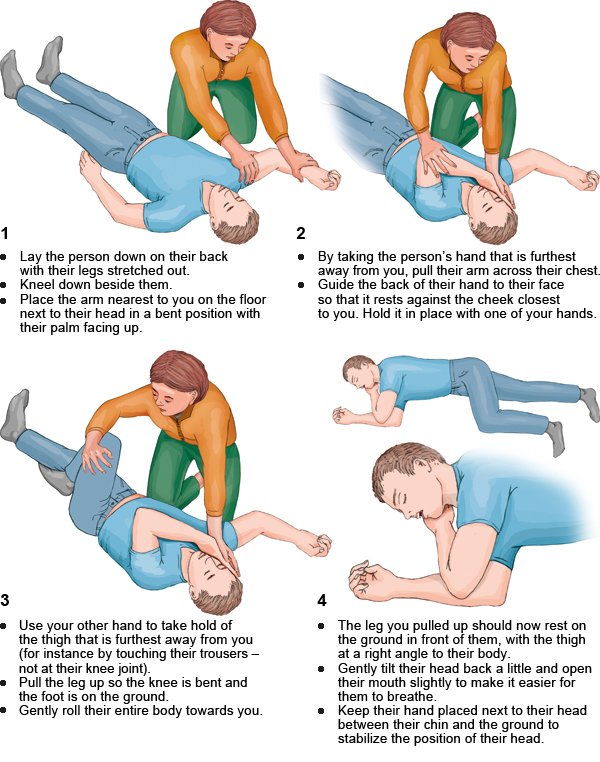Recovery position – When and why?
If somebody is unconscious but still breathing normally on their own, they should be put into the recovery position. That stops blood and vomit from entering the mouth, reaching the airways and stopping the person from breathing.
You can tell if somebody is unconscious but still breathing normally by approaching the person and speaking to them loudly and clearly. You might say something like: “Hello! Can you hear me?” If they don’t react, gently shake their shoulder as if you were trying to wake them up. If they still don’t react then, they are unconscious. Then quickly check their breathing. Hold your ear over the unconscious person’s mouth and nose and watch their chest: If you can hear regular breathing sounds, can feel their breath and see their chest moving up and down, they are breathing normally. If they aren't, they need immediate resuscitation! That is also true if their breathing appears to be abnormal: irregular, very deep, slow, or with a snoring sound.






